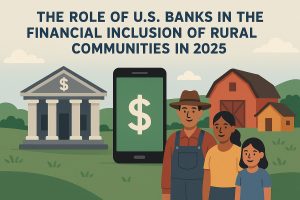In the ever-evolving landscape of the American financial sector, innovations in credit cards are poised to reshape how consumers interact with and manage their finances. Over the next few years, significant advancements are anticipated, bringing transformative changes to the way credit cards are used in daily life.
This article delves into the emerging trends and potential game-changers in the American financial scene, shedding light on exciting prospects ahead. Credit cards, long regarded as an essential tool for financial transactions, offer convenience, flexibility, and numerous benefits.
From enhanced security features to seamless digital integration and personalized rewards systems, these advancements aim to redefine the functionality and user experience of credit cards, ensuring they remain a vital and forward-thinking financial instrument in the modern world.
Innovations in credit cards: what to expect in the coming years in the American financial landscape

Contactless payment revolution
The rise of contactless payment technology marks a significant breakthrough, revolutionizing the way credit card transactions are conducted. With just a simple tap or wave, consumers can swiftly and securely complete purchases, bypassing the need for physical contact with card terminals.
This innovation not only enhances convenience but also aligns with growing concerns over hygiene and efficiency in everyday transactions. As the technology continues to evolve, contactless payments are set to become even more prevalent, reshaping the financial landscape.
With the integration of advanced security features and compatibility with digital wallets, this method promises to provide an increasingly seamless and user-friendly experience. Beyond retail, industries such as transportation and healthcare are adopting contactless systems, paving the way for a more connected and efficient future.
As we move forward, contactless payments stand poised to become the standard, offering a glimpse into the future of frictionless, technology-driven commerce.
Enhanced security features
Innovations in credit card security are becoming increasingly vital in the ever-evolving financial landscape. To combat fraud and enhance user confidence, the integration of biometric authentication technologies—such as fingerprint scanning and facial recognition—has emerged as a game-changing development.
These features add an additional, highly personalized layer of protection, ensuring that only authorized users can access and complete transactions.
As the financial industry continues to adopt and refine these advanced security measures, consumers can look forward to a more secure, seamless experience with credit cards. Enhanced encryption, tokenization, and real-time fraud detection are also being integrated into card systems, further strengthening defenses against unauthorized activities.
By combining cutting-edge technology with user-friendly interfaces, these advancements not only safeguard sensitive financial data but also foster greater trust and confidence in credit card usage, setting a new standard for security in the digital age.
Personalized rewards and AI integration
The future of credit cards lies in tailoring rewards to individual spending patterns. Artificial Intelligence (AI) is playing a pivotal role in analyzing consumer behavior and preferences, allowing credit card issuers to offer highly personalized rewards programs.
Whether it’s cashback on specific categories or customized travel perks, credit cards are becoming smarter in delivering benefits that align with the unique needs and lifestyles of users.
Navigating the changing landscape
As innovations in credit cards continue to unfold, consumers must stay informed to make the most of these advancements. Understanding the evolving features and functionalities empowers individuals to choose credit cards that align with their preferences and financial goals.
It’s crucial for consumers to consider factors such as security, rewards programs, and technological capabilities when selecting credit cards in the coming years.
Environmental sustainability in finances
An emerging trend in credit card innovation involves a heightened focus on environmental sustainability. Many financial institutions are exploring ways to reduce the environmental impact of credit cards by adopting eco-friendly materials and implementing carbon offset programs.
As consumers become more environmentally conscious, the demand for sustainable credit card options is likely to grow, prompting issuers to integrate eco-friendly practices into their offerings.
Integration with digital wallets
The synergy between credit cards and digital wallets is becoming increasingly seamless. Digital wallets, such as Apple Pay and Google Pay, provide a convenient and secure way for users to make transactions using their credit cards.
Expect further integration between credit cards and digital wallets, enhancing the overall digital payment experience and catering to the preferences of tech-savvy consumers.
Blockchain technology integration
The integration of blockchain technology into credit cards is set to revolutionize the financial industry by enhancing transparency and security in transactions. Blockchain’s decentralized, tamper-resistant nature ensures that each transaction is securely recorded and verified, reducing the risk of fraud and unauthorized activities.
By providing a transparent and immutable ledger, this technology allows consumers and financial institutions to track and authenticate transactions with unparalleled accuracy.
As blockchain adoption continues to grow, its application in credit card systems can pave the way for more efficient dispute resolution processes, streamlined cross-border payments, and reduced dependency on intermediaries.
This innovation not only strengthens the security framework but also fosters greater trust between users and providers. With blockchain, credit cards are poised to offer a smarter, safer, and more accountable financial tool, reshaping how transactions are conducted in the modern digital economy.
Flexible payment options
Future credit cards may offer more flexibility in payment options, allowing users to choose from a variety of repayment plans. This could include dynamic payment scheduling based on individual financial circumstances, giving users greater control over managing their credit card balances.
Partnerships and ecosystems
Credit card issuers are likely to form strategic partnerships and ecosystems to offer users a broader range of services. Collaborations with retailers, tech companies, and other financial institutions could result in integrated platforms that provide comprehensive financial solutions beyond traditional credit card functionalities.
Augmented reality (AR) enhancements
The incorporation of augmented reality into credit card applications may redefine the way users interact with their cards. AR could offer immersive experiences for account management, transaction tracking, and even virtual shopping, creating a more engaging and user-friendly interface.
In conclusion, the next few years promise a dynamic transformation in the realm of credit cards in the United States. From contactless payments to personalized rewards and sustainability initiatives, these innovations aim to enhance user experience, security, and environmental responsibility.
As consumers navigate this evolving landscape, staying informed about these advancements will be key to making sound financial decisions and maximizing the benefits offered by the credit cards of the future.






